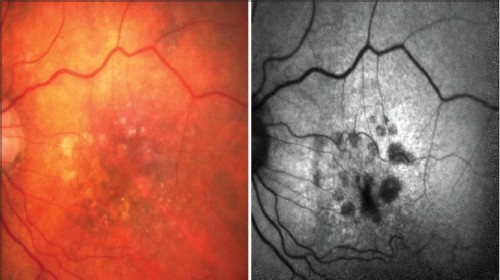General
No CPD Points

Course Summary
Simon Browning & Susan Cowling (16:21)
Autofluorescence, the natural emission of light by biological structures, occurs in the retinal pigment epithelium when the fluorophore lipofuscin produced by photoreceptors is stimulated.
A new technology called ‘fundus autofluorescence imaging’ has been developed to allow more accurate detection of autofluorescence in the eye with the aim of identifying retinal diseases when these are not otherwise evident. Here, Susan Cowling asks community optometrist Simon Browning about autofluorescence in the eye, and the implications of the new imaging technology for a wide range of ocular health issues.
First published in Docet OQ88 (2013).